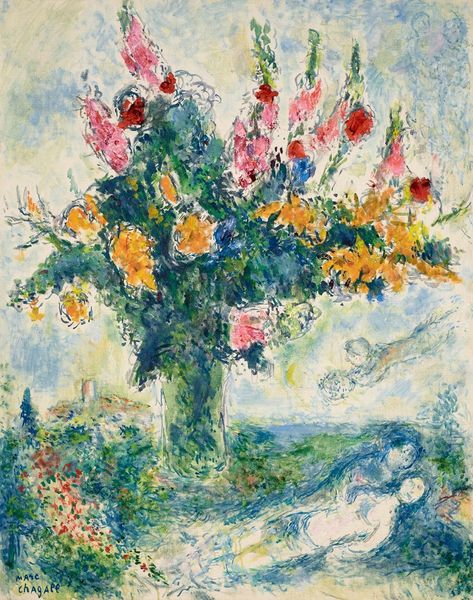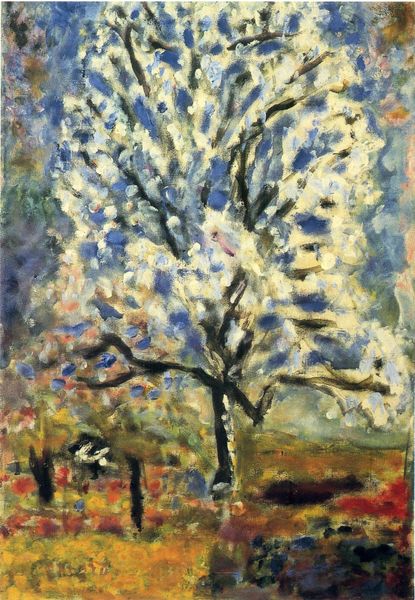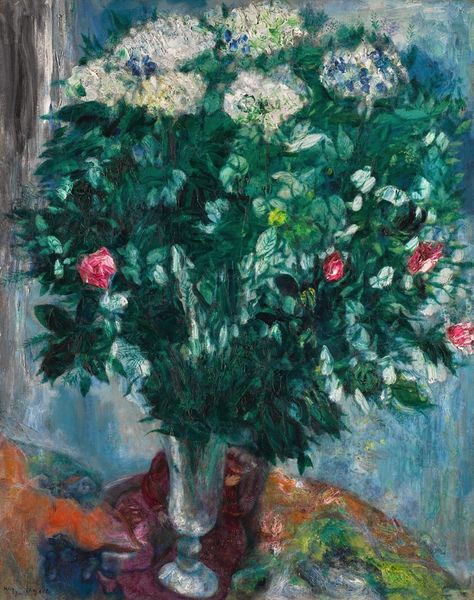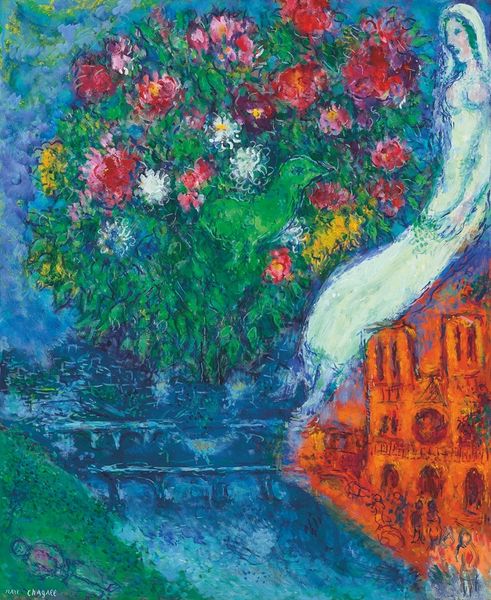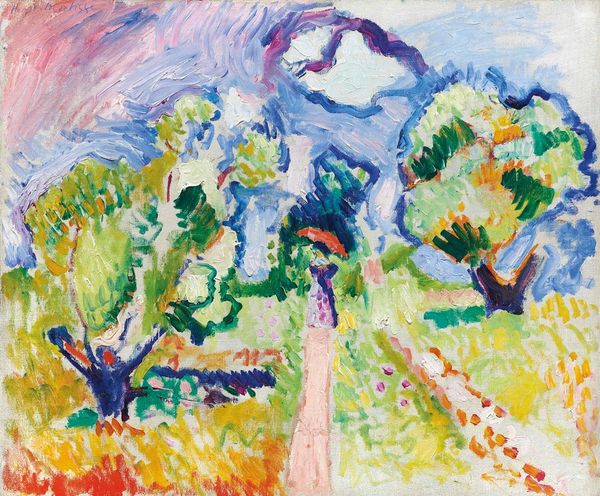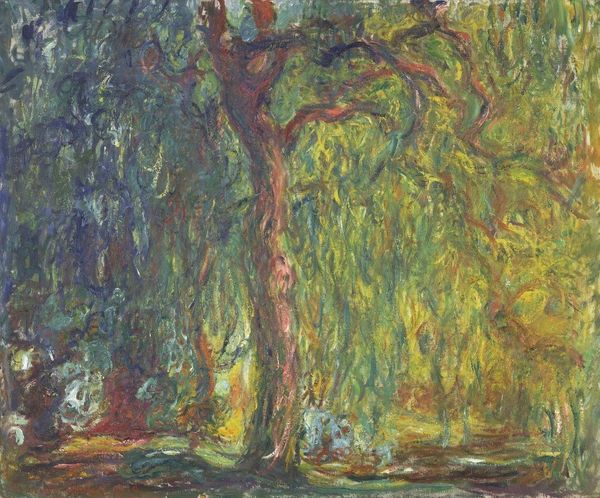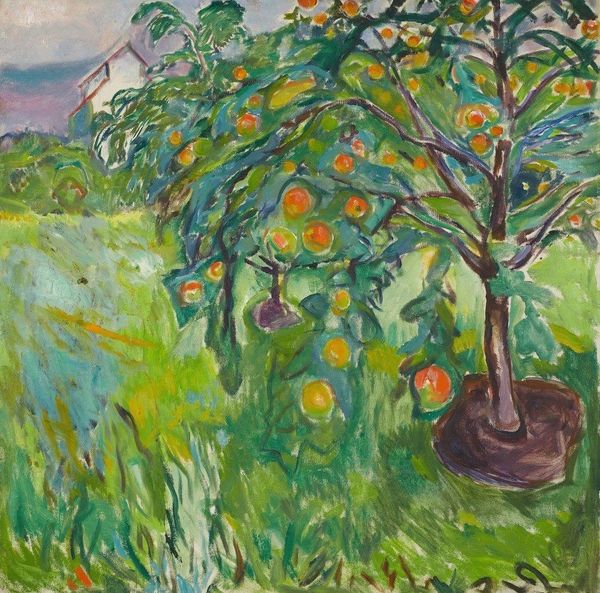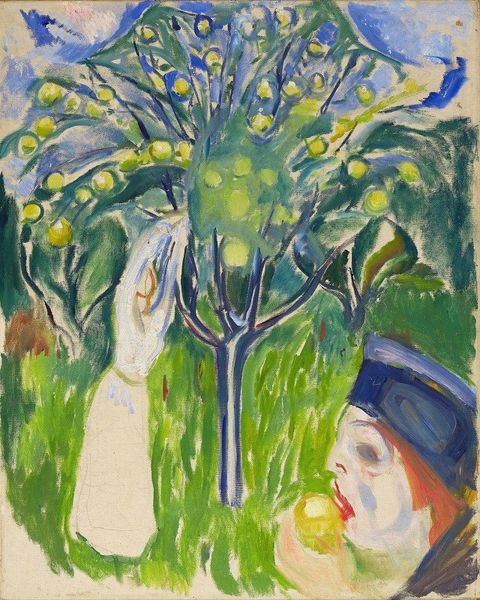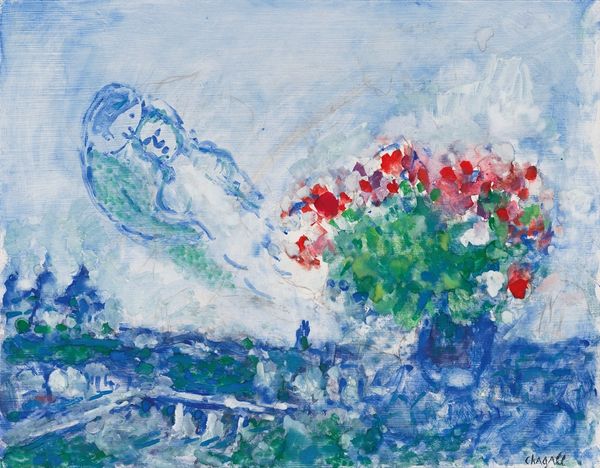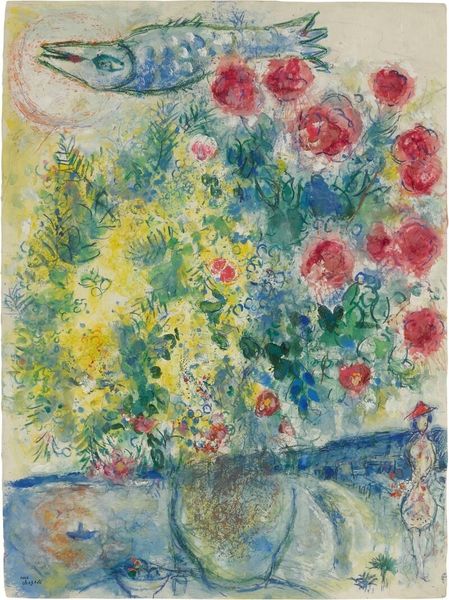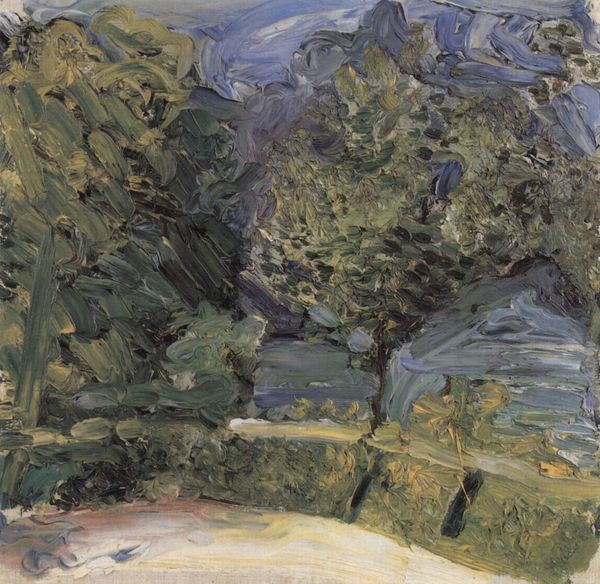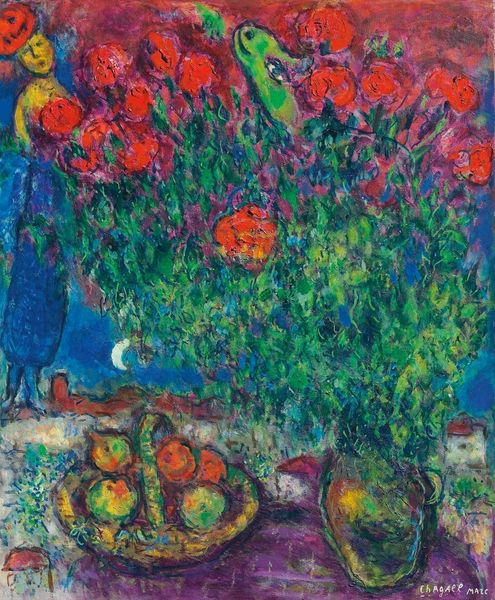
Copyright: Modern Artists: Artvee
Editor: Here we have Marc Chagall's "La nuit de la Saint-Jean" from 1980, made with tempera on canvas. There’s a beautiful dreamlike quality to it, almost a blurring of the interior and exterior. I'm particularly drawn to the mother and child nestled within the bouquet. What strikes you about this piece? Curator: It's a powerful piece, indeed! For me, this painting operates as a site of memory and resistance. Chagall, throughout his career, grappled with themes of displacement and belonging. Considering the date, 1980, and Chagall's history, how might this seemingly idyllic image also be interpreted as a commentary on cultural identity and the fragility of peace, especially after enduring war and antisemitism? Editor: I hadn't thought of it that way, honestly. I was so caught up in the aesthetics. You're saying the dreamlike quality could also represent the disruption and instability of exile? Curator: Exactly. Think about the symbolism of the bouquet – often associated with love and celebration – yet it appears almost as a protective shield around the mother and child, obscuring and safeguarding the pair from the town outside, right? Who are the outsiders here? How might Chagall use the imagery to blur boundaries? Editor: That's a profound interpretation. So, the "Saint-Jean" in the title isn't just a festive reference; it's also a reminder of cultural roots, perhaps even a yearning for a home that might not exist anymore? Curator: Precisely! The painting becomes a complex negotiation between nostalgia, identity, and the ever-present reality of a world marked by conflict and displacement. By putting mother and child figures into the context of what might seem like only flowers is also about placing women, children, family at the forefront, perhaps hinting to matriarchal lineage too. What more might the other symbols such as the donkey tell us about the people in the town? Editor: I see it completely differently now. I'm really struck by how Chagall uses these vibrant colours and familiar figures to explore much deeper, and frankly more troubling, ideas about belonging and trauma. Thank you. Curator: My pleasure. It is a potent reminder of art’s ability to address painful pasts, whilst simultaneously reclaiming beauty and hope for a more equitable future.
Comments
No comments
Be the first to comment and join the conversation on the ultimate creative platform.
